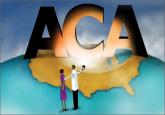Health and Human Services Secretary Kathleen Sebelius and Congresswoman Debbie Wasserman Schultz announced on January 10, 2014, in a blog, that, “today the Department of Health & Human Services (HHS) issued guidance to clarify that under the Affordable Care Act, most health insurance companies and employer plans must cover tamoxifen and raloxifene—like other recommended preventive services—without co-pays or other out of pocket expenses for women at increased risk for breast cancer.”1
Related Article: Women’s health under the Affordable Care Act: What is covered? Lucia DiVenere, MA (September 2012)
This move by HHS comes in response to the US Preventive Services Task Force (USPSTF) recommendation in late September that clinicians offer prescription medications such as tamoxifen and raloxifene to women who are shown to be at a higher relative risk for breast cancer and at low risk for adverse medication effects.2
Related Article: USPSTF recommends tamoxifen or raloxifene to reduce breast cancer risk in high-risk patients (October 2013)
The US Food and Drug Administration (FDA) has approved tamoxifen as a chemo-preventive in at-risk women aged 35 years and older, and raloxifene for this same use in postmenopausal women. Both medications are selective estrogen receptor (ER) modulators that have been shown to reduce the incidence of invasive, ER-positive breast cancer.2
Related Article: What is the gynecologist’s role in the care of BRCA previvors? Robert L. Barbieri, MD (Editorial, September 2013)
The new ruling applies to those whose private insurance policies were written after the law was signed in 2010, as well as for women on Medicaid or Medicare.3
“Access to medications like tamoxifen or raloxifene is just one of many ways the Affordable Care Act is helping the fight against cancer,” write Sebelius and Schultz. “Through the Health Insurance Marketplace, the new health care law is also helping by making health care more affordable and accessible to millions of Americans. And when you consider that Americans who are uninsured and diagnosed with cancer are 60 percent more likely to die from that cancer than those who have insurance—the work that we do together to expand access to health insurance is work that saves lives.”1




